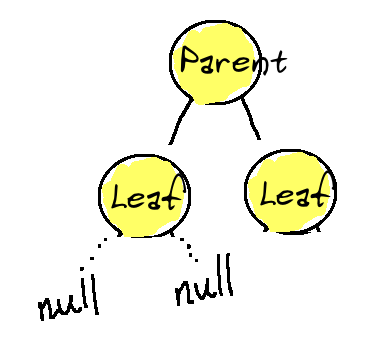Good evening! Here's our prompt for today.
Write a method to determine how deep a binary tree goes. The tree's depth can be described as the number of nodes you encounter as you traverse from the root node to a leaf.
The root node is the topmost node, and a leaf is a node with no children.
For example, you're given the following binary tree:
1 6
2 / \
3 2 14
4 / \
5 13 19The longest distance is from 6 to 19, and we return 3 because it covers 3 nodes.

The method will be invoked like the following:
1const root = new Node(6);
2
3function howDeep(root) {
4 return;
5};
6
7howDeep(root);Constraints
- Number of nodes in the tree <=
100000 - The nodes will always contain integer values between
-1000000000and1000000000 - Expected time complexity :
O(logn) - Expected space complexity :
O(n)considering the call stack
Try to solve this here or in Interactive Mode.
How do I practice this challenge?
xxxxxxxxxx console.log('PASSED: ' + 'assert.deepEqual(howDeep(tree1), 2);');var assert = require('assert');function howDeep(root) { // Fill in this method return root;}function Node(val) { this.val = val; this.left = null; this.right = null;}// Regular binary treesvar tree1 = new Node(4);tree1.left = new Node(1);tree1.right = new Node(3);var tree2 = new Node(5);tree2.left = new Node(10);tree2.left.left = new Node(17);tree2.left.right = new Node(3);tree2.right = new Node(8);// Binary search treesvar tree3 = new Node(6);tree3.left = new Node(3);var tree4 = new Node(5);We'll now take you through what you need to know.
How do I use this guide?
This seems like a pretty straightforward problem: we essentially want to just count the maximum number of levels that the tree has. There's several ways to do this, but we'll need to traverse the tree.
Given that it's a binary tree, this means that there's up to two paths to move -- left and right. This fact simplifies things a bit, as traversal just requires navigating two children at each node.
During traversal, we can detect a leaf either when there is no left or right:
xxxxxxxxxxif (!node.left && !node.right) { return;}
Or we could simply return when there is no node at all.
xxxxxxxxxxif (!node) { // if parent returned twice here (left/right), it was a leaf return;}At every node, we can recursively traverse down the left and right children if they exist, until we reach a leaf.
The difficult part is keeping track of the number of levels.

To do that, we can make the return statement the number of levels thus far, and increment it by 1 at every step.
This solution has a time complexity O(log n).
One Pager Cheat Sheet
- Write a method to
calculate the depthof abinary treeusingO(logn)time complexity andO(n)space complexity. - We can traverse the
binary treeto count itsmaximum levelsby navigating two children at each node and detecting aleafwhen aleftorrightdoes not exist. - We can
returnwhen there is nonodepresent. - We can recursively traverse down the left and right children of each node until we reach a leaf,
returningthe number of levels traversed and with a time complexity of O(log n).
This is our final solution.
To visualize the solution and step through the below code, click Visualize the Solution on the right-side menu or the VISUALIZE button in Interactive Mode.
xxxxxxxxxx}var assert = require('assert');function howDeep(root) { if (root === null) { return 0; } return Math.max(howDeep(root.left), howDeep(root.right)) + 1;}function Node(val) { this.val = val; this.left = null; this.right = null;}// Regular binary treesvar tree1 = new Node(4);tree1.left = new Node(1);tree1.right = new Node(3);var tree2 = new Node(5);tree2.left = new Node(10);tree2.left.left = new Node(17);tree2.left.right = new Node(3);tree2.right = new Node(8);// Binary search treesvar tree3 = new Node(6);tree3.left = new Node(3);var tree4 = new Node(5);Great job getting through this. Let's move on.
If you had any problems with this tutorial, check out the main forum thread here.

